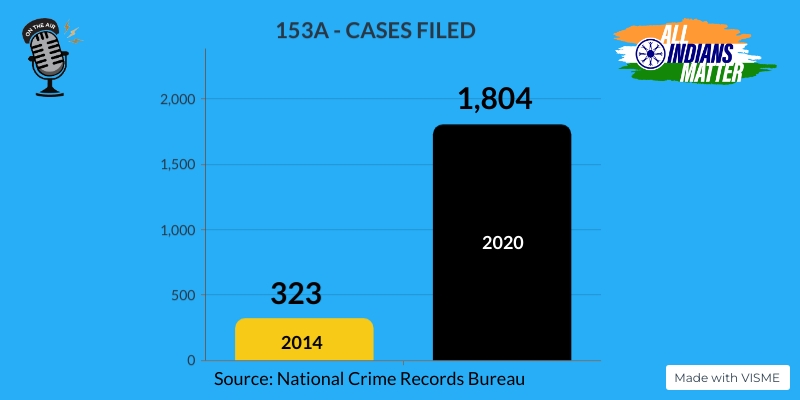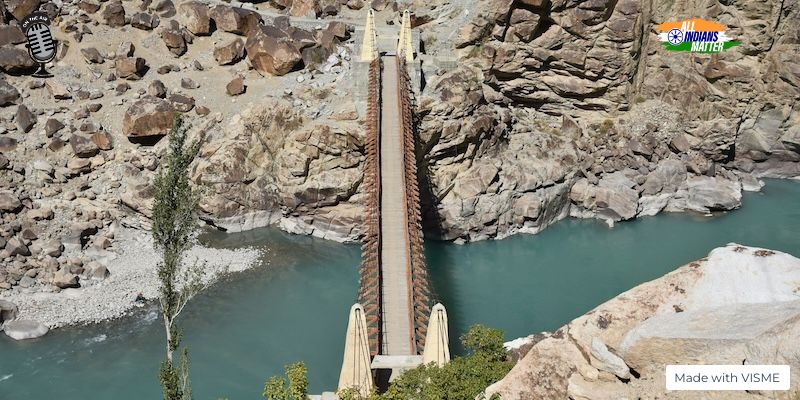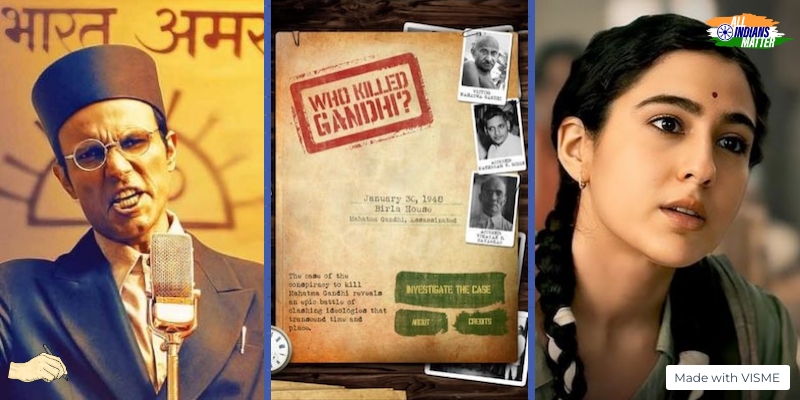Ashraf Engineer
March 4, 2023
EPISODE TRANSCRIPT
Hello and welcome to All Indians Matter. I am Ashraf Engineer.
Congress spokesperson Pawan Khera referred to the prime minister as Narendra ‘Gautam Das’ Modi, pointing to the alleged nexus between the prime minister and Gujarat-based billionaire Gautam Adani. The government, in return, sought to arrest Khera. The FIRs came from different states and mentioned offences ranging from criminal conspiracy to assertions prejudicial to national integration and promoting enmity between religions. The registration of multiple FIRs across states is meant to erode the resources of the accused. Among the legal sections applied was 153A, which refers to promoting enmity between groups on the grounds of religion, race, language and so on. This is a contentious law that has been under the scanner for restricting free speech and for being misused for political vendetta. Thankfully, the Supreme Court granted interim bail to Khera. What exactly is Section 153A and how is it being misused?
SIGNATURE TUNE
Think of the Indian Penal Code, or the IPC, as a vast, multi-terrain landscape. It has 23 chapters and 511 sections that apply to a wide variety of offences, from conspiracy against the state to marital cruelty. This is an edifice that has its roots in the British Raj and has stood for more than a century and a half. Not surprisingly, many believe it needs some fundamental changes.
In recent times, two IPC sections have been much in the news – 295A, which relates to malicious acts intended to outrage religious feelings, and 153A. Both sections date back to the colonial era and there is a long history of their abuse. The government talks about shedding the colonial past but, curiously, seems very keen on preserving laws that can be abused to curb freedom of speech and keep opponents in check.
In this episode, I want to focus on 153A.
A report last year by the National Crime Records Bureau said the number of cases registered under 153A rose six-fold between 2014 and 2020 — that is, from 323 to 1,804. The report also said that such cases have among the lowest conviction rates, 20.2%, and the second highest police pendency rate of 64.3% among major IPC sections. That would make it seem that many of them are false.
Look at the case of Delhi University assistant professor Ratan Lal. Last year, he was arrested on charges of offending religious sentiments after he posted a sarcastic tweet about an object made of stone found during a video survey of the Gyanvapi mosque in Varanasi. Right-wing Hindutva groups claimed the object was a Shivling and that the tweet was an affront to their religious sentiments. Days later, a Delhi court granted Lal bail. Chief Metropolitan Magistrate Siddhartha Malik wrote in the order: “India is a country of more than 130 crore people, and any subject can have 130 crore different views and perceptions. The feeling of hurt felt by an individual cannot represent the entire group or community.” The judge described himself as a proud Hindu and said the tweet was “distasteful and unnecessary” but he recognised that Lal did not intend to promote communal hatred.
So, what exactly is Section 153A?
As I said earlier, it is meant to be a deterrent against “promoting enmity between different groups on grounds of religion, race, place of birth, residence, language, etc, and doing acts prejudicial to maintenance of harmony”. It is punishable with a jail term of up to three years, or a fine, or both.
It was enacted in 1898 and was not in the original penal code.
Now, such hate speech laws have been invoked often to target critics of the government. In May last year, Marathi actor Ketaki Chitale was arrested for a Facebook post against Nationalist Congress Party leader Sharad Pawar. She was booked under the same provisions in 22 FIRs.
On the face of it, there are safeguards against its misuse. For example, 153A requires prior sanction from the government but only before the trial begins, and not at the stage of investigation. To curb arrests based on dodgy premises, the Supreme Court issued guidelines in 2014. So, for offences that carry a sentence of less than seven years, the police cannot automatically arrest an accused before investigation.
In 2021, the Supreme Court said the state would have to prove intent for securing a conviction under 153A. The court said: “Words used in the alleged criminal speech should be judged from the standards of reasonable, strong-minded, firm and courageous men, and not those of weak and vacillating minds, nor of those who scent danger in every hostile point of view. The standard of an ordinary reasonable man or as they say in English law ‘the man on the top of a Clapham omnibus’ should be applied.”
There are many differing perspectives about 153A but there is a general agreement that it remains on the statute because of its use as a tool of political suppression. The section is used to harass critics and opponents regularly across all states. According to NCRB data, between 2018 and 2020, the number of 153A cases rose significantly in states like Tamil Nadu, Uttar Pradesh, Andhra Pradesh, Assam, Telangana and Kerala. These cases take very long to come to a conclusion, so even for the innocent the proceedings are the punishment.
It’s ironic but the impact of sections like 153A on media freedom were foretold by Hindutva icon Shyama Prasad Mookerjee in 1951. Jawaharlal Nehru shepherded through the First Amendment of the Constitution. It was opposed by Mookerjee, who said that Nehru was “cutting at the very root of the fundamental principles of the Constitution”, and that the amendment was the “beginning of the encroachment of the liberty of the people of free India”.
That amendment sought to introduce new ways in which freedom of speech could be curbed. For instance, woolly reasons like interest of security of state, relations with foreign states and so on. In the original Constitution, these were largely limited to libel, defamation, and so on.
Nehru probably felt the courts were too fixated on fundamental rights at the cost of state policy.
The amendment revived sections like 153A and 295A despite them not being part of the original Constitution. The effects of that revival are being felt acutely today.
The Central Government has made some noises about wanting to review the law, but that hasn’t happened because the section, passed by a prime minister it loves to hate, has become a favoured tool. Section 153A has perhaps never been used in this manner in the past. And, until it’s scrapped, it will continue to cast a long, dark shadow over our fundamental rights.
Thank you all for listening. Please visit allindiansmatter.in for more columns and audio podcasts. You can follow me on Twitter at @AshrafEngineer and @AllIndiansCount. Search for the All Indians Matter page on Facebook. On Instagram, the handle is @AllIndiansMatter. Email me at editor@allindiansmatter.in. Catch you again soon.






